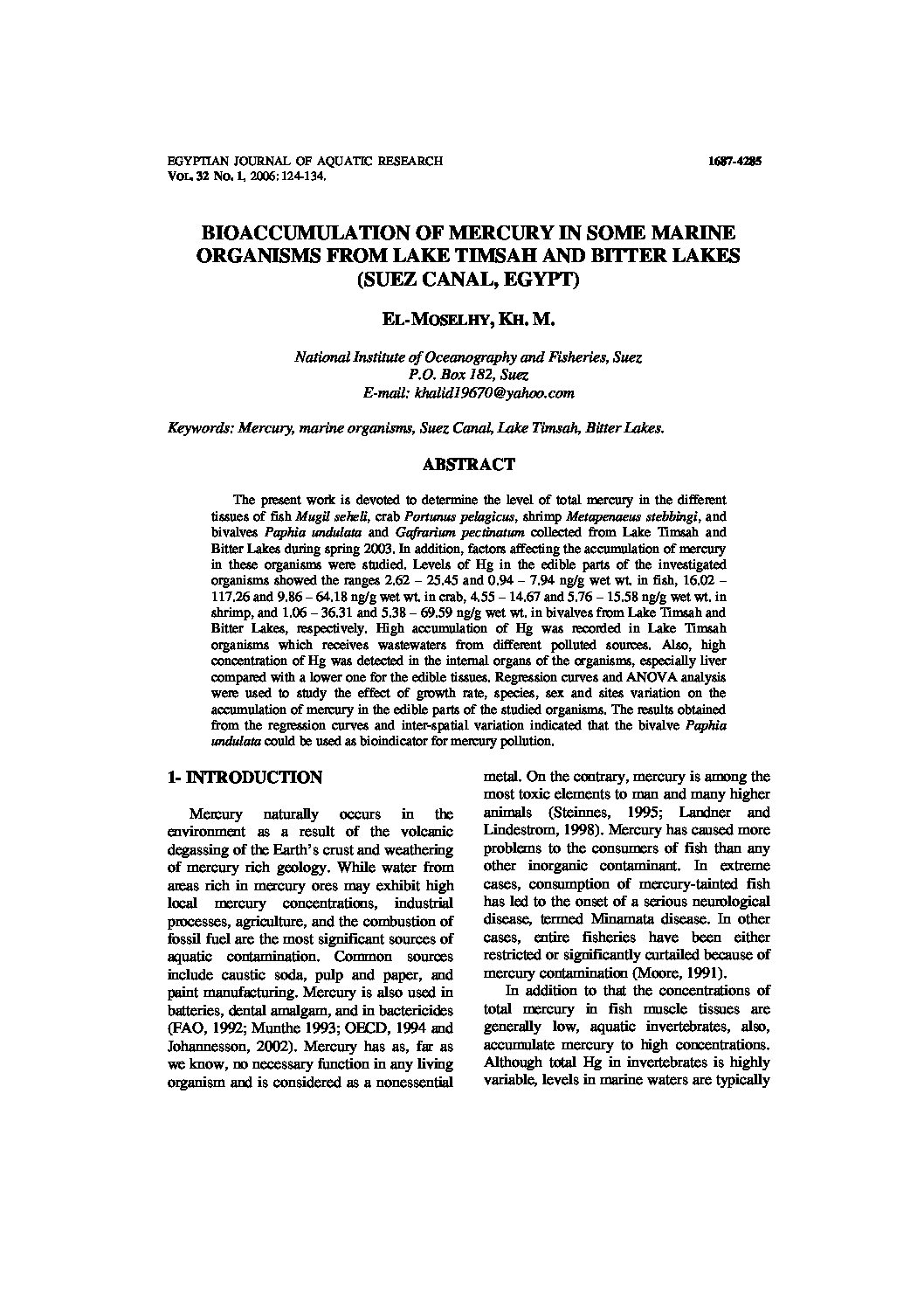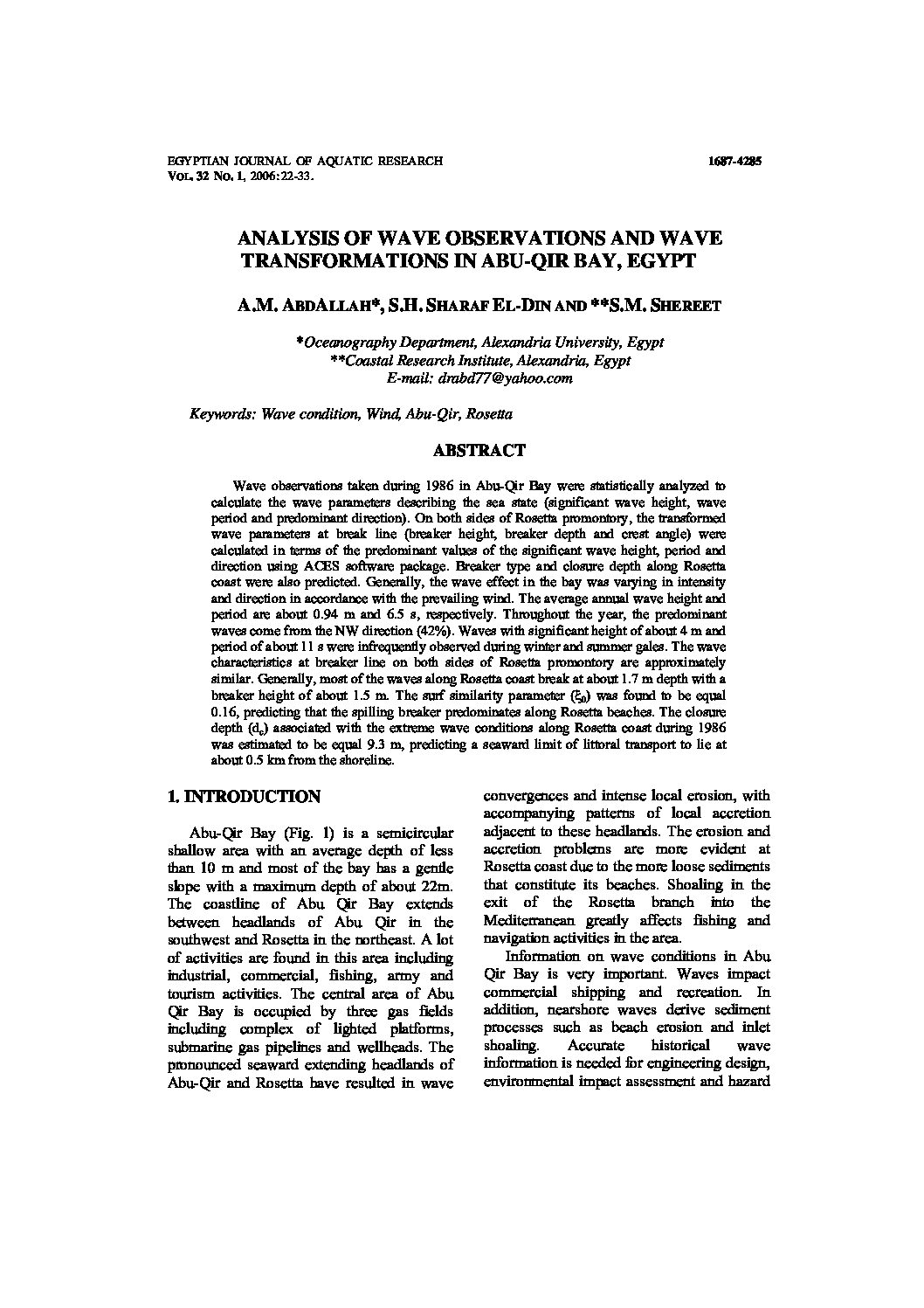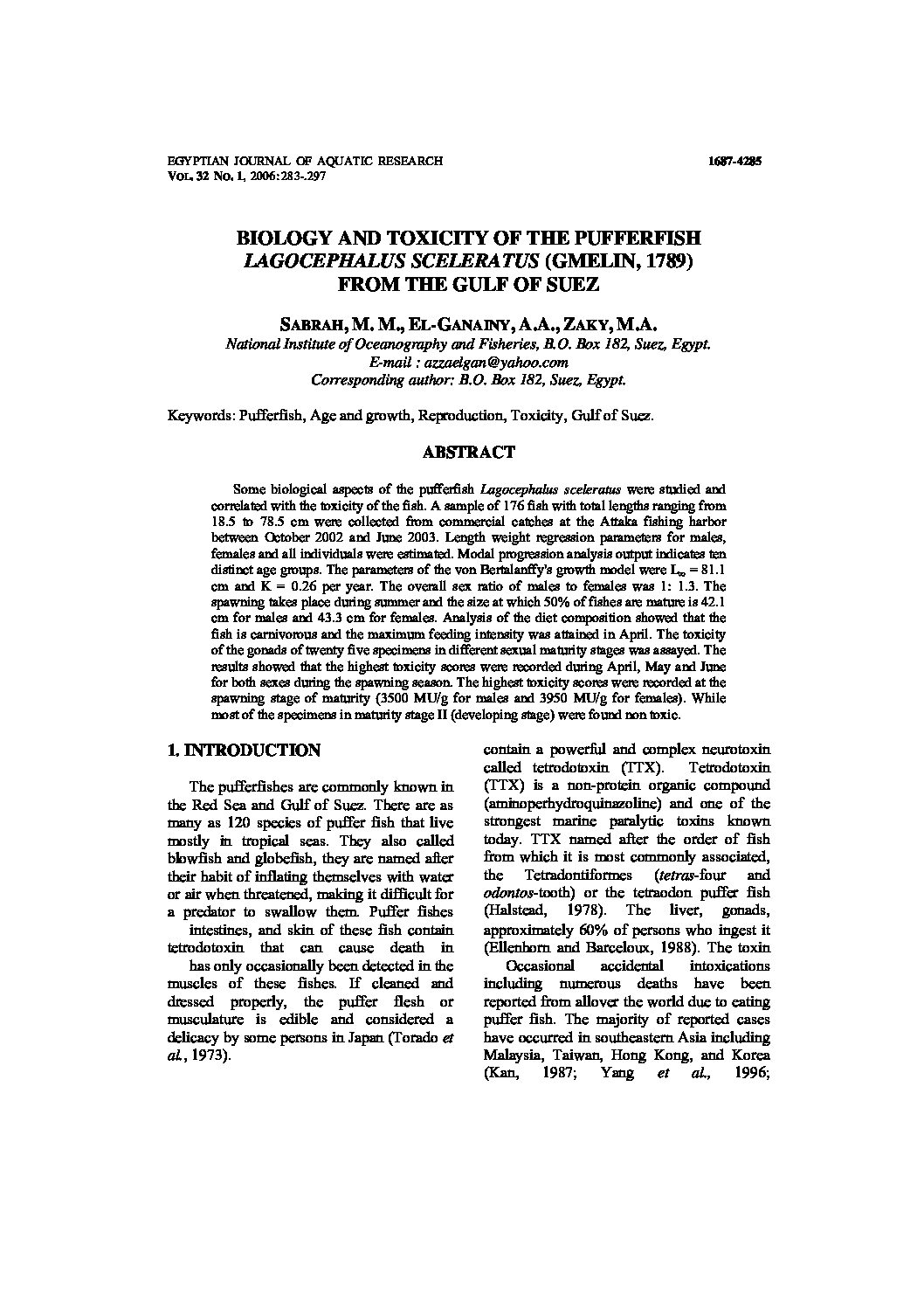Categories
vol-32BIOACCUMULATION OF MERCURY IN SOME MARINE
ORGANISMS FROM LAKE TIMSAH AND BITTER LAKES
(SUEZ CANAL, EGYPT)
EL-MOSELHY, KH. M.
National Institute of Oceanography and Fisheries, Suez
P.O. Box 182, Suez
E-mail: [email protected]
Keywords: Mercury, marine organisms, Suez Canal, Lake Timsah, Bitter Lakes.
ABSTRACT
The present work is devoted to determine the level of total mercury in the different
tissues of fish Mugil seheli, crab Portunus pelagicus, shrimp Metapenaeus stebbingi, and
bivalves Paphia undulata and Gafrarium pectinatum collected from Lake Timsah and
Bitter Lakes during spring 2003. In addition, factors affecting the accumulation of mercury
in these organisms were studied. Levels of Hg in the edible parts of the investigated
organisms showed the ranges 2.62 – 25.45 and 0.94 – 7.94 ng/g wet wt. in fish, 16.02 –
117.26 and 9.86 – 64.18 ng/g wet wt. in crab, 4.55 – 14.67 and 5.76 – 15.58 ng/g wet wt. in
shrimp, and 1.06 – 36.31 and 5.38 – 69.59 ng/g wet wt. in bivalves from Lake Timsah and
Bitter Lakes, respectively. High accumulation of Hg was recorded in Lake Timsah
organisms which receives wastewaters from different polluted sources. Also, high
concentration of Hg was detected in the internal organs of the organisms, especially liver
compared with a lower one for the edible tissues. Regression curves and ANOVA analysis
were used to study the effect of growth rate, species, sex and sites variation on the
accumulation of mercury in the edible parts of the studied organisms. The results obtained
from the regression curves and inter-spatial variation indicated that the bivalve Paphia
undulata could be used as bioindicator for mercury pollution.







